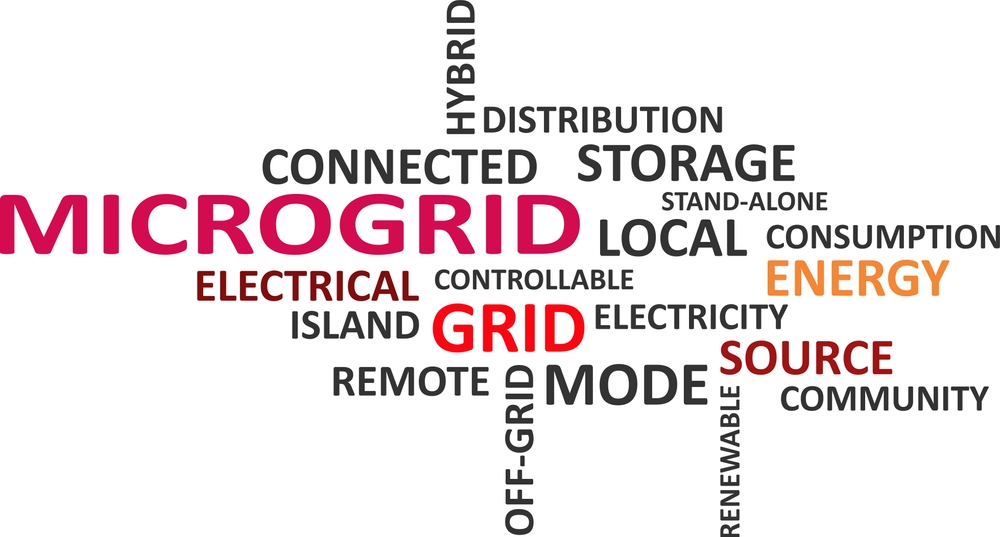
Microgrids first captured attention over a decade ago as a sophisticated form of backup generation following Superstorm Sandy. A lot has changed since then. So, what are microgrids now?
This week, Energy Changemakers launched a new channel, Microgrids Now, to explore the latest iteration of microgrids and their influence decentralizing and democratizing the electric grid.
To start, their influence is expected to be big. The US Department of Energy (DOE) pulls no punches when it comes to the importance of microgrids:
By 2035, microgrids are envisioned to be essential building blocks of the future electricity delivery system. — US DOE, Microgrid Program Strategy
That suggests a lot more than mere backup generation.
So, what’s changed about microgrids? You could say nothing and everything.
The official microgrid definition
The definition of a microgrid, put forward by the DOE several years ago, remains intact:
A microgrid is a group of interconnected loads and distributed energy resources (DERs) within clearly defined electrical boundaries that acts as a single controllable entity with respect to the grid.
In short, microgrids are mini electric grids that can function with or without the central grid by leveraging onsite energy like solar, wind, batteries, generators, fuel cells, and intelligent software and controls.
The unofficial microgrid definition
But microgrids are more than the sum of their technical features. Microgrids are a Swiss army knife tool for electricity consumers, and the list of their uses is long.
When the central grid fails, microgrids keep power flowing to their hosts by disconnecting from the grid and activating their onsite generation. When the grid operates normally, they offer a range of grid services to help ensure energy supply and control electricity prices.
The business, community or institution hosting the microgrid can minimize energy costs by leveraging the microgrid’s onsite generation against fluctuating grid prices. They can also program the microgrid to achieve other goals, such as reducing emissions or maximizing renewable energy use.
Microgrids create efficiencies. Because they operate near those they serve, their power doesn’t have to travel far, averting what’s known as “line loss,” the disappearance of power as it travels over transmission and distribution wires.

Last, microgrids have become vanguards for clean energy. While they can use pretty much any generation technology, new projects often employ renewables and batteries. Microgrids also open the door to more renewable energy use on the grid by managing demand and supply balance fluctuations caused by wind and solar energy.
These many abilities have caused a rise in microgrid installation over the last decade, particularly in the US and particularly for the military, campuses, businesses and critical facilities.
What are microgrids now?
Economic and social forces are reshaping energy and recreating the value proposition for this Swiss army knife.
- Electric demand is growing
- Electricity costs are rising
- The concept of local energy is gaining traction
Electric demand is rising for the first time in many years, brought on by electrification and data center development. At the same time, it’s increasingly difficult to build large-scale power plants and transmission lines. This opens the door for microgrids and other distributed energy resources, which are smaller and easier to site and build. Installation can be quicker and more precise with energy located where needed, avoiding environmental or community disruption caused by the construction of long transmission lines.
In some areas of the country, data centers are emerging faster than grid improvements, leading developers to pursue onsite microgrids as an alternative or supplement to the grid.
Those electrifying their fleets or buildings face similar problems. Can the grid serve their new electric demand? If not, onsite power makes sense, especially microgrids, since they can also provide price management, emissions reductions, and electric resilience and reliability.
Meanwhile, electricity prices continue to rise in much of the US, encouraging businesses and consumers to seek alternatives to grid power. In some places, being off-grid is the cheaper alternative.
At the same time, interest in local energy is increasing, with more communities trying to develop energy value chains within their borders and control the kind of power they consume. The International Energy Agency finds this happening worldwide.
Community solar, virtual power plants, and other forms of distributed energy act as local energy, but a microgrid is the only form that offers a complete toolkit of benefits.
So, what are microgrids now? By definition, microgrids have not changed, but their value proposition is evolving as electricity demands and societal preferences shift.
Our new channel, Microgrids Now, will explore these emerging opportunities. We invite you to join us on this journey by bookmarking Microgrids Now, subscribing to the Energy Changemakers newsletter, following our podcast, checking out our resource library, and joining our community.
